Sentinel 限流算法-漏桶算法
漏桶算法的介绍网上一大堆,摘取如下:
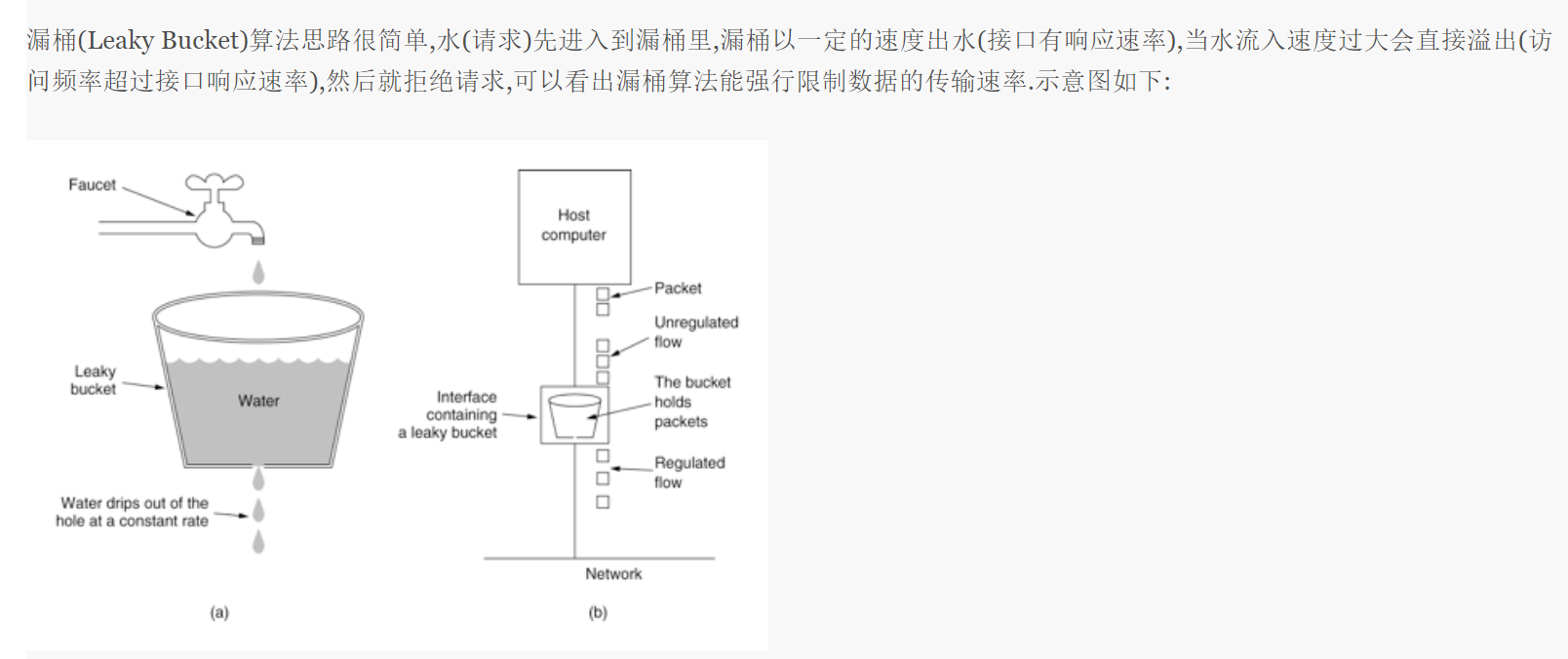
漏桶算法的伪代码如下:
public class LeakyBucket {
// 当前桶的容量 当前累计的请求数
private int allWater;
// 桶的阈值
private volatile AtomicInteger water;
// 出水速率 每秒 rate
private Long rate;
private volatile long timeMillis = System.currentTimeMillis();
public boolean canPass() {
long now = System.currentTimeMillis();
water.addAndGet((int) Math.max(0, water.get() - (now - timeMillis) / 1000 * rate));
timeMillis = now;
if (water.incrementAndGet() < allWater) {
return true;
} else {
water.decrementAndGet();
return false;
}
}
}
漏桶算法是控制的是速率,让请求以一定的速率通过,所以它无法应对流量激增的情况。比如 配置的速率 100/s,那么相当于10ms 通过一个,10ms要是通过2个都不行。这个和滑动时间窗口的限流就有很大的区别了。
我们看下Sentinel中是怎么使用漏桶算法的。
页面上的流控配置对应:排队等待,Sentinel还提供了处理不了的时候有个等待时长。
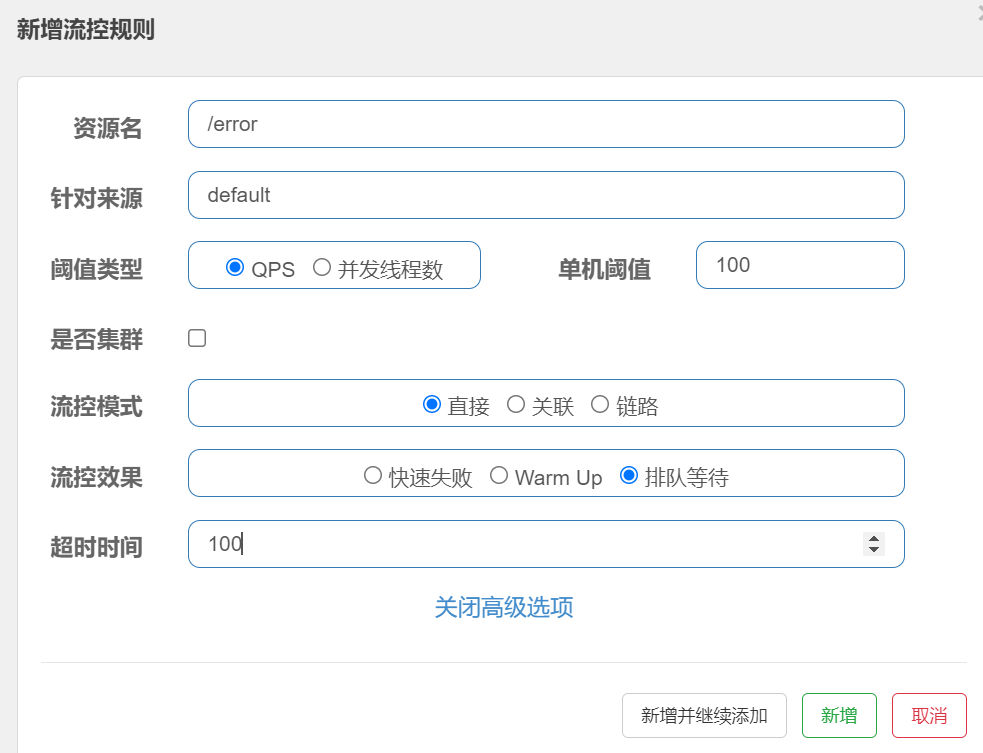
看下具体的算法。
从前面的分析中知道了不同的分流算法会在FlowRuleChecker#passLocalCheck 根据不同的FlowRule走到不同的流控算法。这个流控效果是排队等待的rater对应
private static boolean passLocalCheck(FlowRule rule, Context context, DefaultNode node, int acquireCount,
boolean prioritized) {
Node selectedNode = selectNodeByRequesterAndStrategy(rule, context, node);
if (selectedNode == null) {
return true;
}
// 排队等待 算法对应RateLimiterController
return rule.getRater().canPass(selectedNode, acquireCount, prioritized);
}
public class RateLimiterController implements TrafficShapingController {
private final int maxQueueingTimeMs;
private final double count;
private final AtomicLong latestPassedTime = new AtomicLong(-1);
public RateLimiterController(int timeOut, double count) {
// 超时时长
this.maxQueueingTimeMs = timeOut;
// 速率
this.count = count;
}
@Override
public boolean canPass(Node node, int acquireCount) {
return canPass(node, acquireCount, false);
}
@Override
public boolean canPass(Node node, int acquireCount, boolean prioritized) {
// Pass when acquire count is less or equal than 0.
if (acquireCount <= 0) {
return true;
}
// Reject when count is less or equal than 0.
// Otherwise,the costTime will be max of long and waitTime will overflow in some cases.
if (count <= 0) {
return false;
}
// 当前时间
long currentTime = TimeUtil.currentTimeMillis();
// Calculate the interval between every two requests.
// 两个请求之间的间隔 就是页面配置的阈值换算成了毫秒单位 假如页面配置的单机阈值:100 这里的结果就是 10ms
long costTime = Math.round(1.0 * (acquireCount) / count * 1000);
// Expected pass time of this request.
// 因为有了速率的限制 所以此次请求有一个规定的可以放行的时间
long expectedTime = costTime + latestPassedTime.get();
// 当前时间 大于等于 可以放行的时间 说明可以放行了
if (expectedTime <= currentTime) {
// Contention may exist here, but it's okay.
latestPassedTime.set(currentTime);
return true;
} else {
// 当前时间 小于 可以放行的时间 说明暂时不可以放行
// Calculate the time to wait.
// 上次请求的时间和当前时间都重新计算取了最新的
// 计算当前时间距离可以放行的时间 有多久
long waitTime = costTime + latestPassedTime.get() - TimeUtil.currentTimeMillis();
if (waitTime > maxQueueingTimeMs) {
// 如果当前时间距离可以放行的时间 大于超时时长 则直接不放行
return false;
} else {
// 等待时长小于超时 时长 说明可以进入等待
// 再次计算下次可以执行的时间,注意这里是直接更新 latestPassedTime 的值
long oldTime = latestPassedTime.addAndGet(costTime);
try {
// 再次计算新的等待时长 因为 latestPassedTime 可能已经被改变了
waitTime = oldTime - TimeUtil.currentTimeMillis();
if (waitTime > maxQueueingTimeMs) {
// 超时的话 还是是会被拒绝 然后时间回滚
latestPassedTime.addAndGet(-costTime);
return false;
}
// in race condition waitTime may <= 0
if (waitTime > 0) {
// 等待 休眠后放行
Thread.sleep(waitTime);
}
return true;
} catch (InterruptedException e) {
}
}
}
return false;
}
}
这个算法看起来很简洁,这里主要控制请求可以放行的时间来控制放行的速率。我们可以对比下上篇使用的快速失败-滑动时间窗口,和这次的排队等待-漏桶算法的实时流量监控图形。
我们都设置qps 100
快速失败:
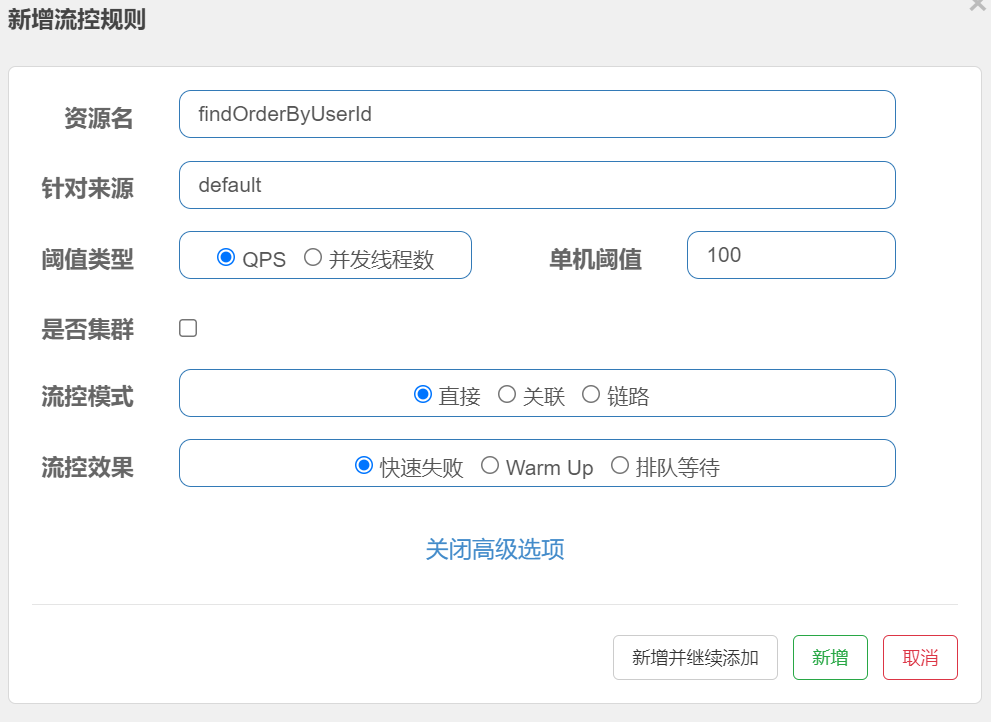
压测数据,200并发,0.5秒发起。循环1次。

从图形看出,时间滑动窗口限流,流量曲线是陡增的。
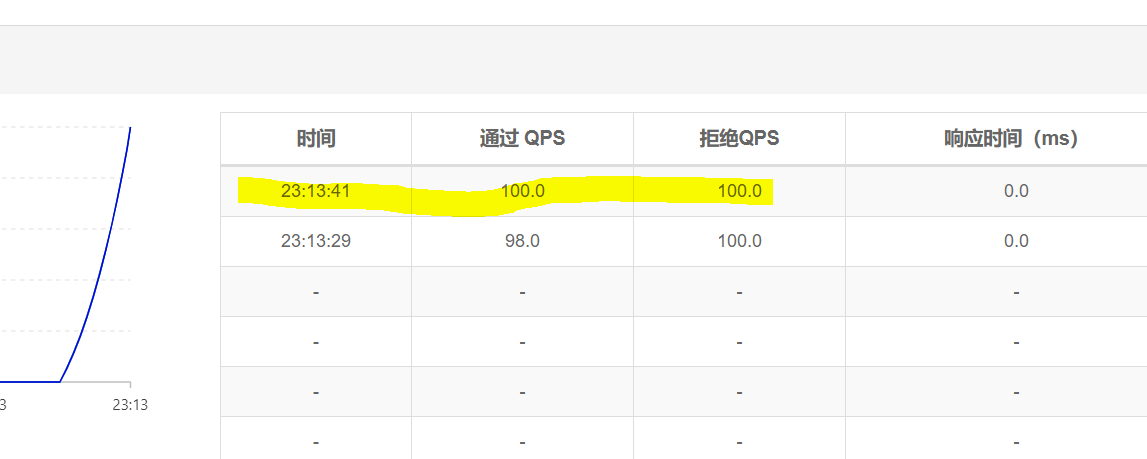
再来看下排队等待。
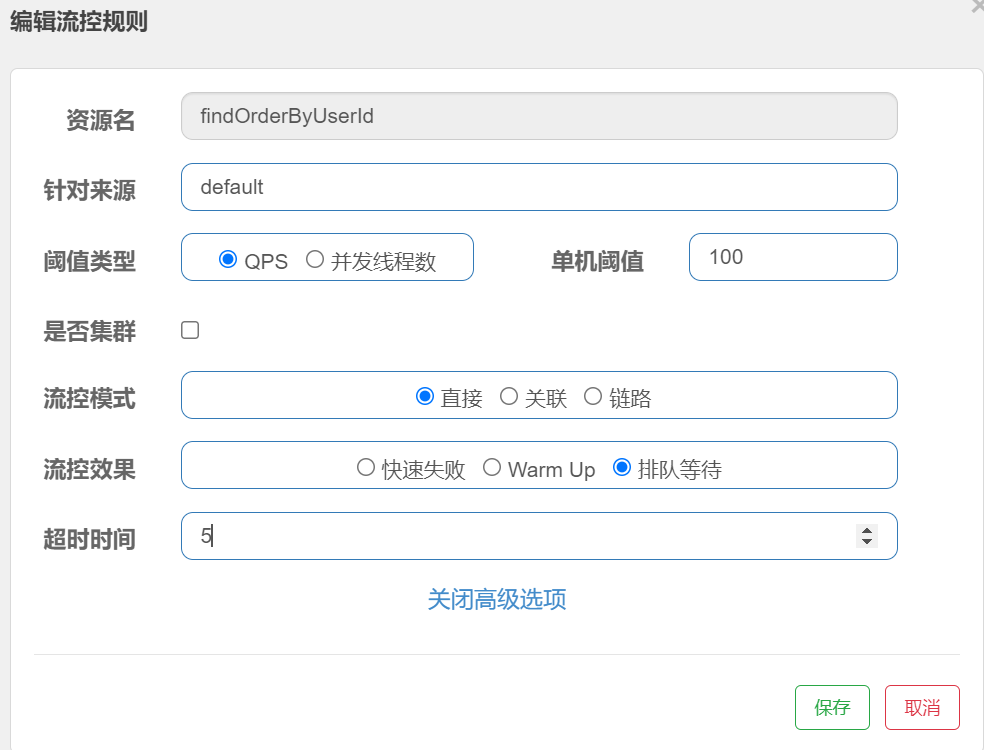
效果:看到1s内只通过十个,这个和计算出来的桶的流速是一致的10ms一个。流量图也是失败的线比成功的线高很多。
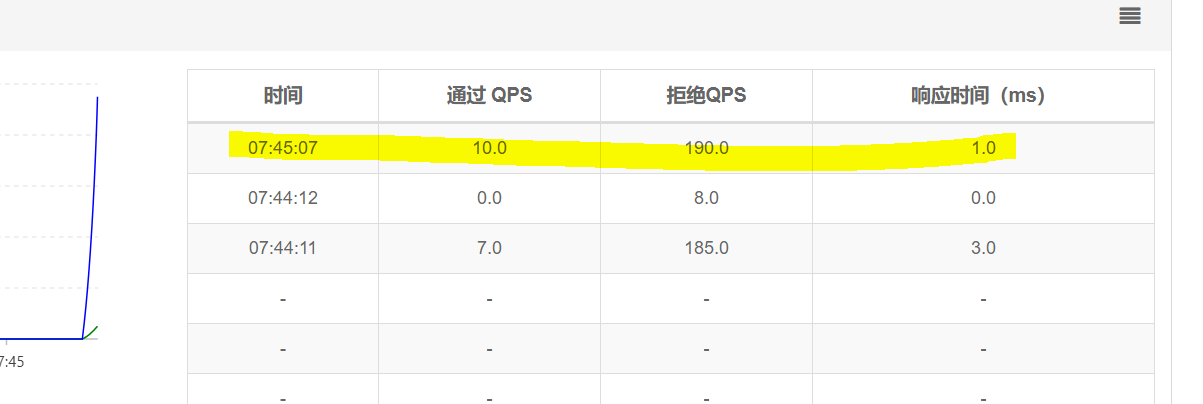
原文链接https://www.cnblogs.com/krock/p/16260429.html
标题:Sentinel 限流算法-漏桶算法
作者:michael
地址:https://blog.junxworks.cn/articles/2024/03/20/1710907904396.html